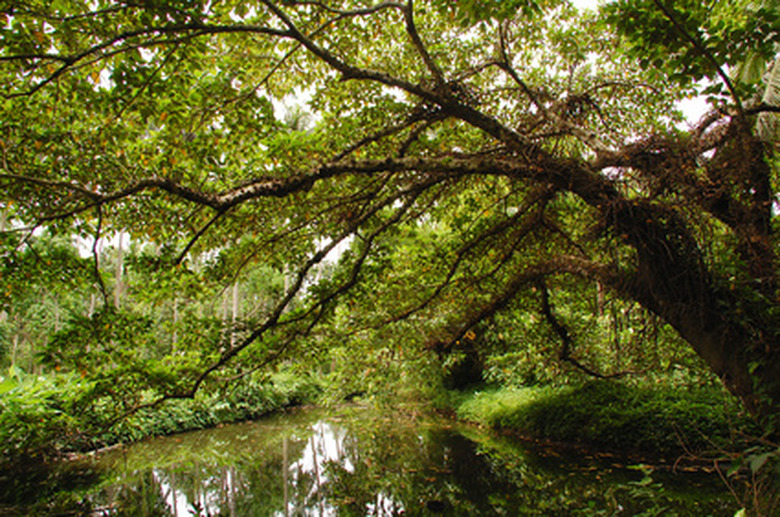Trees For Wetland Areas In Ohio
Wetlands, also known as marsh, bogs, and swamps, serve several important purposes in Ohio's landscape. Besides filtering impurities and improving water quality, wetlands also provide a home to rare and endangered plants. These plants, shrubs and trees provide waterfowl and other birds with critical resources for nesting, feeding and shelter. Planting the right types of trees in wetland areas also helps with erosion control while reducing flood flow.
Silver Maple
Silver maple is named for the silvery underside of its leaves. While the tree works well as a shade tree in gardens and landscapes, it thrives in wetland areas. Also known as water maple, the tree grows to 80 feet in height and 60 feet wide. Since it grows very quickly, the wood tends to be brittle, making it prone to damage during strong storms. Silver maple requires full to partial sun and grows in almost any type of soil, although it prefers wet areas such as flood plains and riverbanks.
- Wetlands, also known as marsh, bogs, and swamps, serve several important purposes in Ohio's landscape.
- Silver maple requires full to partial sun and grows in almost any type of soil, although it prefers wet areas such as flood plains and riverbanks.
Swamp Cottonwood
As it name implies, swamp cottonwood thrives along wetland borders. The tree grows to 90 feet in height with its trunk occasionally reaching 3 feet in diameter. In the spring, flowers consisting of dangling catkins appear before the leaves come out. The foliage consists of 3- to 5-inch broad oval leaves. Twigs holding a number of quarter-inch green capsules release tiny, cottony seeds that drift in the wind until they find suitable wet, sandy soils in which to germinate.
Swamp White Oak
Swamp white oak grows along streams and wetlands where flooding may occur, although the trees do not survive in permanent flood zones. The tree typically grows fast, reaching heights of 75 feet, although a few trees reach 100 feet in well-drained lowland soil. Some white oak trees live 300 years or more. Fruits consist of acorns reaching 1 1/4 inches long. The acorns grow for one year, maturing in September or October of the following year. Wildlife, like ducks and non-game birds such as woodpeckers, find the sweet-tasting acorns irresistible. Squirrels and other small mammals also find the acorns an important food source.
- As it name implies, swamp cottonwood thrives along wetland borders.
- The acorns grow for one year, maturing in September or October of the following year.
